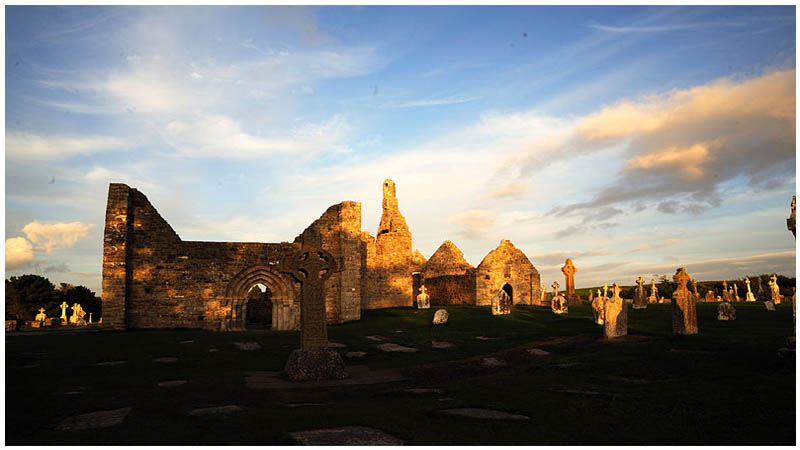In 544, Saint Ciarán of Clonmacnoise decided at barely 30 years old to found a monastery in County Offaly, Ireland. The monastery was situated right next to the River Shannon and to the south of the town of Athlone, today considered the commercial capital of the Midlands.
Saint Ciarán arrived in Offaly and, together with seven friends, made the acquaintance of Diarmait Uí Cerbaill, the High King of Ireland.
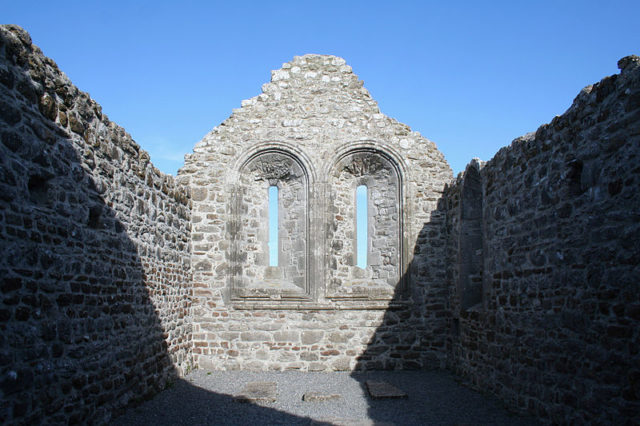
The Diarmait helped St. Ciarán to erect a church. The church was initially a wooden building; over the years it was modified many times, eventually becoming a monastic complex.
In September 549, St. Ciarán of Clonmacnoise contracted the plague and died whilst he was still in this thirties. According to legend, he was buried beneath the wooden church. Temple Ciarán was erected on the location of his grave in the 9th century.
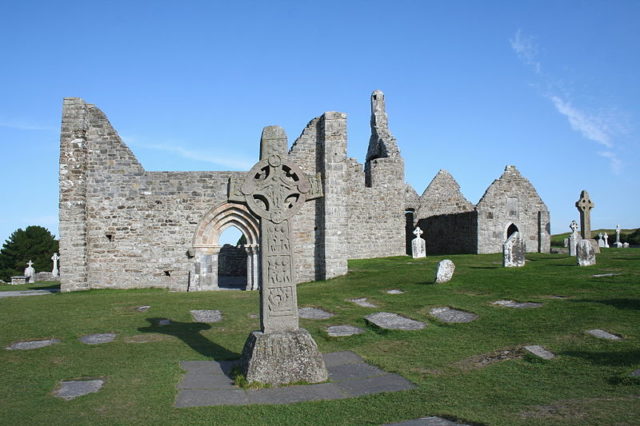
According to the chronicles of Adomnán of Iona, abbot of Iona Abbey and author of a book on the life of St. Columba, St. Columba himself visited Clonmacnoise monastery whilst he was still working towards founding a monastery at Durrow.
During his stay at Clonmacnoise, St. Columba debated the official date of Easter and made a bold claim that the monastery had been visited by angels.
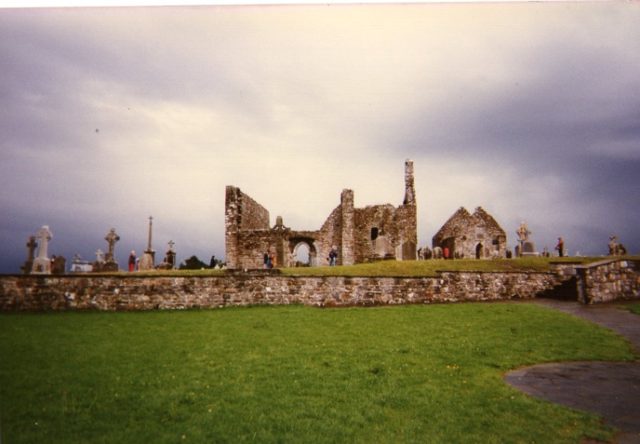
According to legend, a little boy made a daring attempt to surreptitiously touch the garment of St. Columba during his visit. The saint sensed the boy’s action, and quickly turned around and grabbed the child. He blessed him and said that he would teach the doctrine of salvation. The boy’s name was Ernéne mac Craséni.
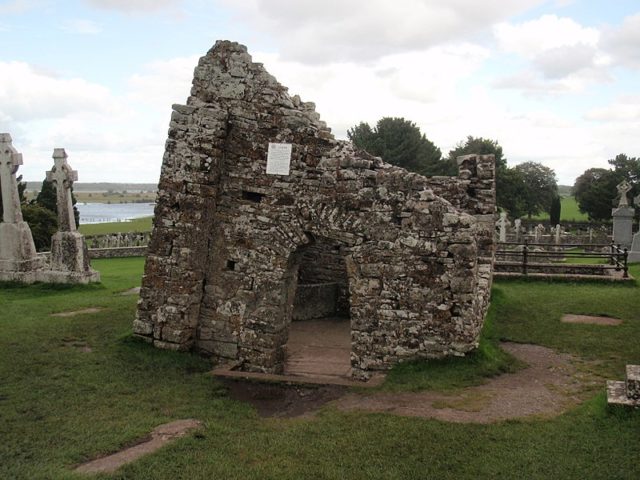
Between the 8th and 12th centuries, Clonmacnoise monastery experienced a period of growth. During this period, the monastery was a frequent target of attack. According to historians, the monastery was attacked a total of 40 times in four hundred years by English forces, 27 times by Irish forces, six times by the Normans, and seven times by the Vikings.
At the start of the 9th century, the wooden structures of the monastery were re-erected in stone. As the 11th century was nearing its end, its population grew to almost 2,000 monks: a big change from the 10 men that were there at the beginning.
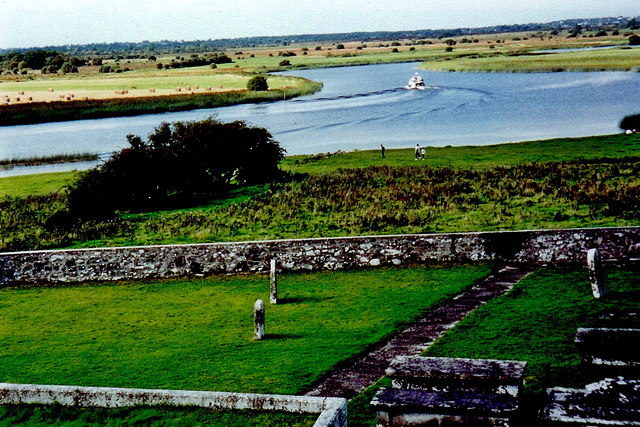
The monastic complex was comprised of a number of churches, priestly workshops, and dwellings, around which was a ring of houses that belonged to the farmers and craftsmen who supported the monastery and its community.
The craftsmen gave the monastery a number of wonderful stone and metal artworks, some of which are preserved to this day; one of these is the Clonmacnoise Crozier which is on display at the National Museum of Ireland.
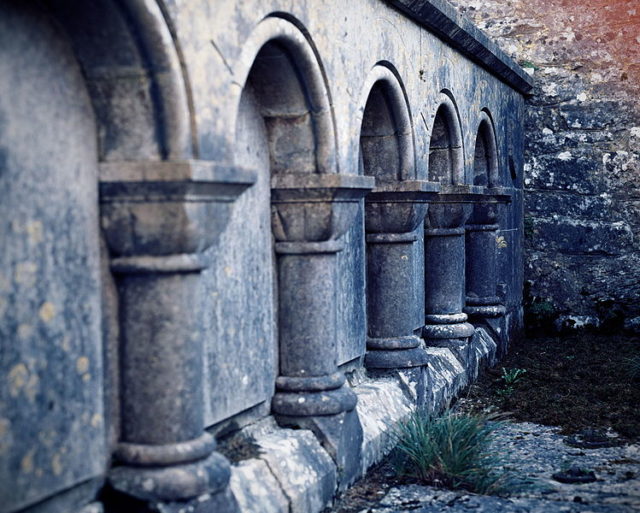
The 12th-century Irish manuscript The Book of the Dun Cow was written at Clonmacnoise monastery. At the start of the 12th century, things started to veer off in a different direction and the monastery was about to start its long decline.
Among the reasons for this turn of events was the growth of Athlone. The town became a major trading center and had some of the best defenses in Ireland. As a result, many people began to leave Clonmacnoise and move to Athlone.
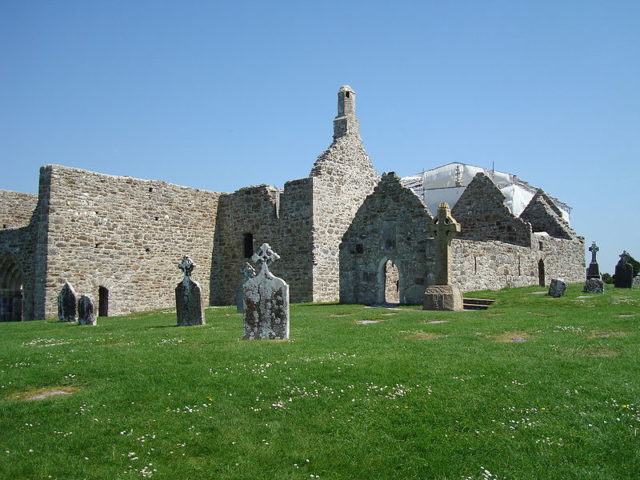
In 1552, Clonmacnoise monastery met its end. It was destroyed by English forces, who obliterated the site and left it shrouded in its own dust and ruble. In 1979, Pope John Paul II paid a visit to the monastery during his trip to Ireland. This was the first time a Pope had visited Ireland and his visit was a spectacle witnessed by 2.5 million people.
Today, the site is managed by the Office of Public Works and is open to the general public. In 1993, the visitor’s center was opened. Thousands of people come every year to visit the remains of the monastic complex.
